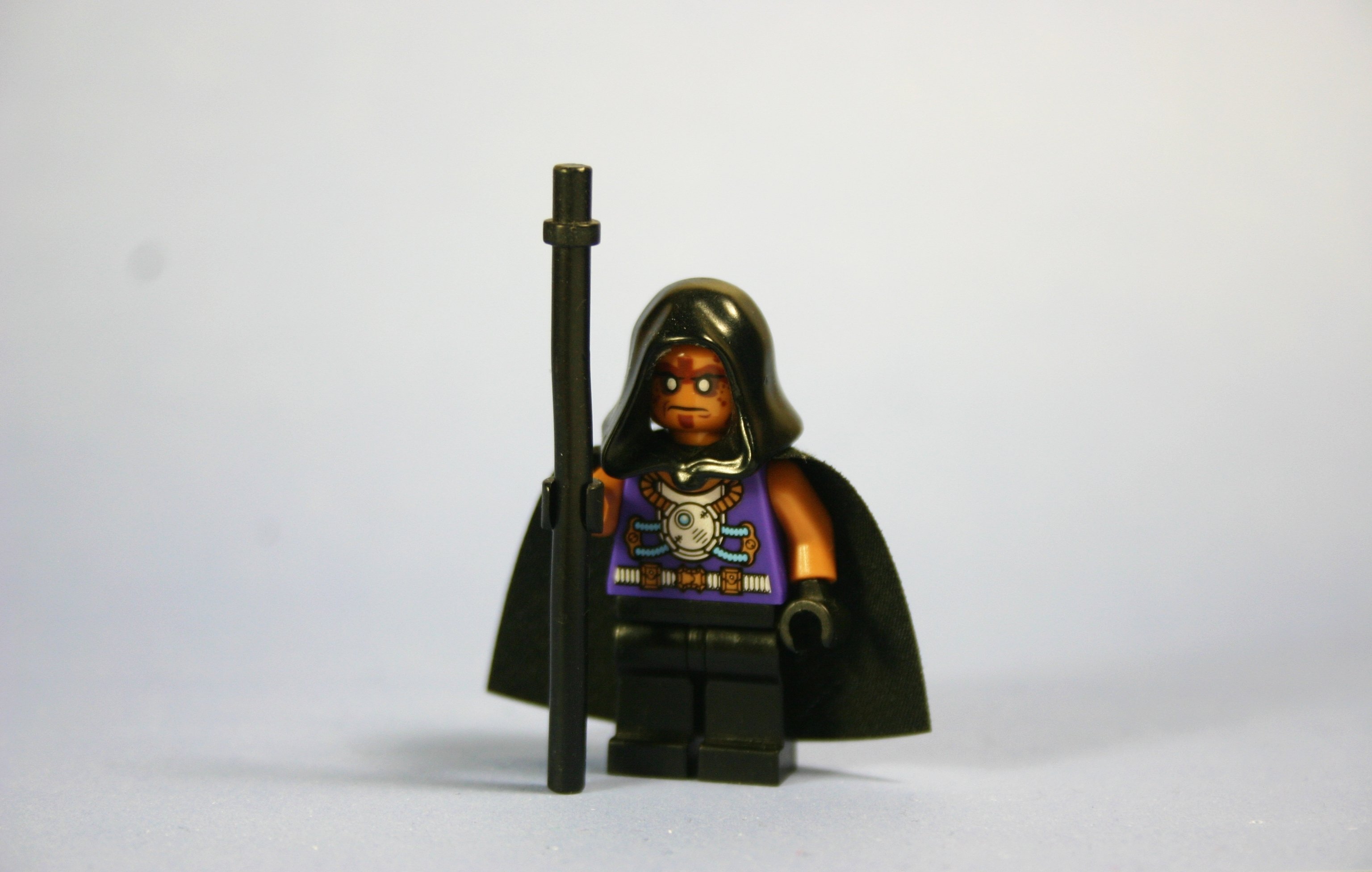side note i like the use of calvin over that other guy
yeah fuck crowder
don’t fuck him tho
not unless you want to be a victim of abuse i guess
Crowder’s one of my favorite musicians… Oh wait, different Crowder.
Music Crowders’s good. Who’s this other Crowder?
The louder one.
Wdym? I legit don’t know (I’m not exactly up-to-date with the current (presumably american) news)
Steven Crowder, the assshole from Louder with Crowder. If you don’t know about him you’re lucky.
deleted by creator
Ah that guy-- I only knew of him from the meme template. He looks to be one of those people who call themselves “christians” and then do none of what Jesus said.
Honestly in this case it’s fine not knowing.
How come? Like who is he? what’d he do?
That Covfefe got cold a long time ago.
Not a hot take at all. Asking someone to go from a GUI heavy operating system to a command line heavy one and be just as productive is lunacy. Like all major changes it is important to ween off the old thing.
My biggest hurdle with the switch has been permission related issues, and you can’t deal with those cleanly with a UI, and every help thread under the sun throws out a bunch of command line commands giving a solution without explaining why those changes are needed. It may seem like Unix 101 to experienced Linux users, but it is really cryptic to newcomers coming from operating systems that are…cough more lenient with their permissions.
There is also a mentality that UIs are much more idiot proof than command line. UIs are written by people who actually know the OS so we can’t accidentally delete our home folder because of a typo. It is a very legitimate concern.
Yesterday morning i installed Mint xfce on an old laptop.
I wanted to install synaptics drivers for the touchpad because i use the trackball as mouse but need the touchpad for clicking. Something that isnt configureable in the default driver.
When i copied an example config file and added my line, i rebooted the computer.
The GUI broke because in the example config file, there were “…” To indicate writing further options, but xorg couldnt interpret or ignore it, so i had to figure out how to edit textfiles in the command line.
No fun times, and definetely a risk for new users.
This story is literally every experienced Linux users first horror story.
I still remember the first time I broke my xorg config on my shiny new slackware 10 install in early 2005.
It’s so common there’s an XKCD about it.
I agree, BUT that is only because the average windows user never even had to bother with permission. I find permissions on Linux A LOT easier to handle than on Windows. Basically the way Windows does permissions is garbage, so they made it so that people can just do whatever so they won’t complain about permissions. That is… one way of doing things, I guess.
Not really, the vaaaast majority of PC users don’t need the linux commandline.
deleted by creator
Do any of those actually match this one? I looked through the first few pages, and there was nothing related to Linux.
You are correct, which is why I deleted it about a minute after I posted it. Unfortunately deletion of a comment does not propagate to other instances as well as creating one.
Which does not change the fact that this “hot take” IS a repost.
I didn’t mean to plagiarize but if I did I apologize
it is not about plagiarism as in “stealing someone’s ip” but about the fact that being a repost is in itself a proof that is not not really that hot take.
New Linux Users don’t even know the difference.
Ha! Yeah, I remember that phase. I was planning to install LXDE as my first distro, simply because I thought the wallpaper looked cool.
I agree - was switching to Fedora about month and a half ago, and only learned about KDE vs Gnome like a week ago, when I was reinstaling to Nobara to fix some NVIDIA issues.
I did hear terms like KDE or Gnome thrown around, but never really realized that it’s actually and important choice. And once you add X11 vs Wayland to the mix, it’s suddenly so confusing I just subconsciously choose to ignore that choice and went with whatever the OS installed for me. I though that DE chouse is similar to X11 vs Wayland choice, i.e something tha is more about back-end than front-end, and didn’t realize that’s literally how your OS UI looks and controls, instead of how it works in the background (which I now know is what X11 vs Wayland is actually about)
Turned out I really don’t like Gnome (Which was default for Fedora), but love KDE, which was thankfully a default for Nobara.
So, if you’re ever recommending Linux to someone, be it in a comment or somwhere else, or someone is asking for a recommended distro, please include a short paragraph about the importance of choosing the correct DE, and explanation of what it is and that you can change it!
Yeah hi that’s me - I just use pop_os and everything works so I just roll with it
PopOS is great! I have used a few other (but never strayed far from APT), and I also did some light reading when doing my final decision . PopOS was the best fit for and easy-to-use OS without Snaps. Linux is great and all with how much control you have, but I want as little maintenance as possible for my daily driver.
Yeah that’s all I need - I’m super into everyone else hyper customizing what they use, I love seeing everything that can be done, but I just need something that works and pop_os is it, and as I’ve said before, my games run better on pip_os than they ever did on win 10/11
i love K⭐D⭐E
KDE FTW!
Arguably you can’t beat Debian + KDE
Aktually, I prefer Arch + KDE. I say if you like your current desktop, then stay with it. I’ve hit the sweet spot with what I’ve got because I love the AUR, pacman, and paru.
Arch btw
I’ve used Arch before and I still keep an Arch distrobox container but my current usage requires stability.
deleted by creator
Tbh i do this for over half a year now and only had 2 issues were I had to reinstall the kernel after an update via a chroot
Maybe installing system packages through the AUR was a mistake but it’s so tempting
OpenSUSE + KDE
I feel you. I don’t agree but I feel you.
And I have installed hundreds of opensuse systems, many for new linux users.But that was my choice as the sysadmin (well really one of my predecessors some decades ago). It isn’t as amazing for self-administering newbies.
Another very good option
Just became a first time user (~48 hours ago) of KDE on Sparky distro and I’m pretty impressed.
i read that like it was in the history of the world video
Great take. But you know the real sneaky one that trips you up? File system.
I wouldn’t call myself a beginner, but every time I install a Linux system seriously I see those filesystem choices and have to dig through volumes of turbo-nerd debates on super fine intricacies between them, usually debating their merits in super high-risk critical contexts.
I still don’t come away with knowing which one will be best for me long-term in a practical sense.
As well as tons of “It ruined my whole system” or “Wrote my SSD to death” FUD that is usually outdated but nevertheless persists.
Honestly nowadays I just happily throw BTRFS on there because it’s included on the install and allows snapshots and rollbacks. EZPZ.
For everything else, EXT4, and for OS-shared storage, NTFS.
But it took AGES to arrive to this conclusion. Beginners will have their heads spun at this choice, guaranteed. It’s frustrating.
I did NTFS because both windows and Linux can read it. Do I know literally any other fact about formatting systems? Nope. I’m pretty sure I don’t need to, I’m normie-adjacent. I just want my system to work so I can use the internet, play games, and do word processing.
I once tried to install my Steam Library in Linux to an NTFS partition so I wouldn’t have to install things twice on a dual boot system. Protip: don’t do that.
Oo! That’s definitely a gotcha. Good tip!
I once heard that the trick to this is you need to let Steam “update” every game before you switch OSs. If it doesn’t get to finish this, it will bork. That’s also highly impractical I feel though.
So yeah on my dual boot Linux is for making things and doesn’t see my main Steam library. Win10 is just for games. :p
EDIT: Win11 or 12 won’t be a problem because I’m confining them to a VM for only the most stubborn situations, and doing everything including gaming with Linux. :D
chkdsk -f (or r or whatever the third option is), reboot twice, but do it multiple times because steam on linux asks you to reinstall the games in the exact same spot and you accidentally do it because you’re not paying close attention due to the mild panic windows threw at you?
https://github.com/ValveSoftware/Proton/wiki/Using-a-NTFS-disk-with-Linux-and-Windows
There is a guide here that says you can do it, but my experience was that I installed the games in Windows on my D drive, mounted the drive in Linux (Mint, I think), and when I tried to play them The system locked up. Rebooting into windows, Steam said the game files were corrupt and I had to reinstall them. I’ve always just kept two separate game libraries on any dual boot systems ever since.
Interesting. I was able to use the files perfectly fine from linux, but windows threw a tantrum when I tried to boot and removed everything linux had touched.
Ext4 is the safe bet for a beginner. The real question is with or without LVM. Generally I would say with but that abstraction layer between the filesystem and disk can really be confusing if you’ve never dealt with it before. A total beginner should probably go ext4 without LVM and then play around in a VM with the various options to become informed enough to do something less vanilla.
and then play around in a VM with the various options to become informed enough to do something less vanilla.
This part is skippable, right? Any reason a user should ever care about this?
(note: never heard of LVM before this thread)
It makes adding space easier down the road, either by linking disks or if you clone your root drive to a larger drive, which tends to not be something most “end users” (I try not to use that description but you said it heh) would do. Yes, using LVM is optional.
It’s all skippable if you want… Just put a large / filesystem on a partition and be on your way. There are good reasons for using it in some cases (see my response now).
This would absolutely be my thinking too. When I was still newish to linux, I remember lots of confusion with LVM and trying to reformat drives.
Can you explain LVM in practice to me? I used ext4 and now Fedora Kinoite with BTRFS, the filsystem never makes any problems and some fancy features just work.
In practice, you would split a disk up to keep /home separate from/ and probably other parts of the filesystem too like /var/log… this has long been an accepted practice to keep a full disk from bringing something production offline completely and/or complicating the recovery process. Now, you could use partitions but once those are set, it’s hard to rearrange them without dumping all the data and restoring it under the new tables. LVM stands for Logical Volume Manager and puts an abstraction layer between the filesystems and the partitions (or whole disk if you are into that). This means you can add Disks arbitrarily in the future and add parts of those disks to the filesystems as required. This can really minimize or even eliminate downtime when you have a filesystem getting filled up and there’s nothing you can easily remove (like a database).
It’s good to know but with the proliferation of cloud and virtual disks it’s just easier on those systems to leave off LVM and just keep the filesystems on their own virtual disks and grow the disk as required. It is invaluable when running important production systems on bare metal servers even today.
Hope this helps.
Thanks! So BTRFS does something similar with volumes, but baked in.
I should also point out that some modern filesystems like btrfs and zfs have these capabilities built into the filesystems natively so adding LVM into the mix there wouldn’t add anything and could, in fact, cause headaches.
What is LVM?
Lending my voice to this as well for most, my thought is EXT4, without LVM, deferring to the preferred FS for the distro. It is a mature, stable, and reliable choice and logical volumes complicate things too much for beginners.
If dual-booting, yeah, definitely an NTFS partition for shared storage (just be aware that Windows can be weird with file permissions and ownership).
If I read
lsblkcorrectly, I am usingext4for my whole drive. I have used linux for some years now, but I never bothered to learn more than “next next next done” when installing my OS.Does BTRFS popOS allow BTRFS? Should I bother for a daily driver?
Unraid turned me on to BTRFS, but in the end, you have to want to use the features to make it matter.
Only have one HDD and using a laptop, ext4 has been working well enough so far. I only wonder if there is something else I should use for my home drive for better disaster recovery.
It really depends on the disaster. Snapshotting isn’t strong disaster recovery protection. It’s more like I’m about to do something stupid and need to undo. If you need real disaster recovery slap an NVMe in an external enclosure and sink them up occasionally. Or set up sync thing or something like that.
In practice BTRFS is a bit faster and on a Distro like Fedora or Opensuse they already integrate it to do system backups while running (copy on write).
In practice it just works and you dont use all the fancy possibilities, because a majority of the Linux world still sticks with ext4 for whatever reason, so Filemanagers and backup tools wouldnt reach everyone.
Its a perfect example of Linux slowing down itself by desperately refusing to change
- Xorg
- old Desktops
- old software, system packages, damn appimages
- no automatic updates
- ext4 instead of something modern
Ext4 is from 2008. BTRFS is even older from 2007, but was only declared stable in 2013. More innovation, more testing time, more “dont use it yet, it is unstable”. Ext4 probably never was as they didnt try that much.
I have heard good things about ZFS as well, but that is mostly for servers?
Honestly, I’d say the defaults most distros use will be fine for most users… If they don’t know why they should use one filesystem over another, then it’s almost certainly not going to matter for them
Yes, I listened to a podcast about that recently. Linux was far with XFS or something, but then Apple came, improved their HFS and actually made tools for it and it got better.
BTRFS is just as established as etx4, just not as damn old. It also just works, and it has advanced features that are crucial for backups. But I have no idea how to use btrbk and there is no GUI so nobody uses that.
But as a filesystem that just works like ext4, plus the automatically configured snapshots in both regular and atomic Fedora systems and OpenSuse, BTRFS is awesome.
Only outdated Distros that fear change stick with ext4, at least thats my opinion.
I’m still figuring it out. I know ExFAT works across all desktop OS’s, NTFS works with Linux and Windows, and ext4 only works with Linux.
But it took a half hour of googling to figure out you can’t install Linux on NTFS. I planned to do that to ease cross platform compatibility. Oops. I’m also attempting a RAID 1 array using NTFS. It seems to work, but I’m not sure how to automatically mount it on boot. I feel like I might have picked the wrong filesystem.
I’ve settled on btrfs a year ago and I’m happy with it. I like the compression and async trim.
Makes sense to go simplest as possible on a home pc and even home sever. More important with raid and production capacity planning or enterprise stuff.
Just installed Mint to try it out because it looks similar to Windows. Don’t judge me.
Oh I’ve judged you! And I find you guilty of making an acceptable decision that suites your preferences.
I’ll get the pool noodles!
i wonder how good noodles would be if they were made in a pool
The sentence, however, is still death.
To be carried out in 3283745405.
I installed Mint for the sake of trying it and I quite liked Cinnamon, but after that I did some distro and desktop hopping, I will not go back until it has proper Wayland support.
It has proper Wayland support.
Cinnamon? If you’ve seen the news that it’s getting Wayland support, it doesn’t mean it has now or anywhere in the near future.
I’ve been using Linux in different capacities since the late 90s. I use Mint with Cinnamon because it’s stable, does all I need and I don’t need to fuss with it. You’re more than fine.
Installed it on a thin client instead of win10 iot for the same reason, basic functionality all there, being used as a media streaming browser machine, no regrets.
Had previous experience with fedora and others many years prior, definitely can tell how far it all progressed since
deleted by creator
Here is an alternative Piped link(s):
Piped is a privacy-respecting open-source alternative frontend to YouTube.
I’m open-source; check me out at GitHub.
A smart distro allows you to change DEs without changing the distro, though.
Is it just me or is every new distro just a base with a different DE? I started to notice this a few years back but not sure if it was my imagination or something developers starting doing because it was easier to ship the DE as “the OS” than it was to instruct users on how to switch to their DE.
Yeah, that’s pretty much it. Distros used to be about experimenting with different packaging systems and system managers, but now seems like the packaging systems are mostly the three: Arch, Debian, Red Hat. And the system manager is almost always systemd.
So the only thing to do (beyond better quality control, which takes a lot of constant work) is to make the DE somehow unique.
Repositories and package versioning are also extremely important in ways newbies don’t realize yet. There’s a significant variety between using Debian, Ubuntu, Pop!_OS or Kali. They are all Debian based using apt but they are all decidedly entirely different systems with completely different purposes and uses.
They could be using different package managers or different repos
I think the default setting matters, if there is any. Looking at Gentoo.
Fun aside, I think Fedora might be a good choice, because Gnome is easy and polished!
Fedora also comes with a dozen different DEs prepackaged and installable with a single, simple command. Each user just can select and change their own desktop with a menu selection on the login screen
My problem with Gnome is if it were my desktop, I might as well run Windows, since Gnome shell/mutter is slightly less capable than Windows. Extensions exist, but are very much a second class citizen and get broken by shell versions frequently, and the author of an extension may be gone when it comes time to rework it for a new version.
Plasma/kwin have pretty much everything I want in desktop/window management baked in.
I love gnome overall and it’s my favorite de, but the missing features and extensions being almost mandatory for basic functions definitely are a pain.
Extensions are cool but the basics should be built in.
Fedora has ten other desktops to choose from. I’m currently test driving Budgie
I do fedora with KDE/plasma.
Nowadays fedora is a decent “boring” distribution, that finally settled into blatantly prompting to add the non free repositories you will probably want.
Ubuntu was annoying with it’s little adventures in “not invented here” with mir, unity, and nowadays snap. So nice to have a modern, boring distribution.
Are there (sizeable) distros that does not allow you to install multiple DE’s and change between them?
That’s not usually the problem. Usually you can generally do this on any distro, even ones that have a higher level of integration with their DE.
The problem is more likely to be issues caused by overlapping configurations and base libraries that can cause weird issues if they aren’t swapped out or kept default. If they aren’t default and are managed by the package manager, usually the package manager will mark it as modified and often won’t touch it unless you purge the configurations. Some will ask and some will straight up nuke em.
To me the problem is actually removing the old one. You can easily uninstall gnome, but it will leave behind config files and various data. It’s less clean.
Also, there’s an overlap in the libraries required by DEs, so you should use the “replace” option in you package manager (if it has one) to let o t figure out the best way to uninstall one and install the other.
That’s a problem with the package manager
Not entirely, for example you don’t expect the package manager to remove the gnome folder from the .local of every user
AFAIK Fedora comes with Gnome and KDE, both in Wayland and X11 version, out of the box, and you can just select one when logging in.
I’m sure they all allow it, but some make it awkward enough that a reinstall might be a better option.
someone who switches away from the distro’s default desktop environment is not a new user.
Yes, but a lot of them have multiple DEs (Ubuntu/Lubuntu/Kubuntu/Xubuntu…) and sometimes the DE is specific to the distros (Mint).
Linux Mint uses Cinnamon as the DE, which you can use with Fedora (and probably others).
You can actually choose to download an Linux Mint iso with either Cinnamon, MATE, or Xfce, so you’re not exclusively locked into Cinnamon.
TIL
You get to choose whatever in my distro’s installer
only distro ive tried that had that was debian (and arch if you count a tty as an installer), which one do you use?
NixOS
isnt nix installed in a similar way to arch?
Endeavour OS offers these on install
But the post is more about recommending a DE to start with/them picking one they like since it’s visual. And then you recommend a distro where that is default
For windows users that go to Linux I always recommend KDE as it looks like windows and it’s easy for them to understand and use it!
Start recommending Cinnamon then, it’s the best DE when switching from Windows.
Whats better in cinnamon in your opinion?
It’s really similar to Windows in how you use it. Switching between Windows 11 and Cinnamon is as seamless as it can be.
There’s almost no configuration or anything necessary, you just install it and it’s great.
Got it. Thanks for elaborating.
Same applies for Manjaro with KDE and on top of that it has support for wallpaper engine which I really wanted.
cinnamon is lighter and simpler and looks more like the best version of windows (7)
Okay. I can see that. Thanks for elaborating.
I can’t see how looking like a 14 year old version of Windows (as opposed to a newer version) is an advantage for people coming from Windows.
windows 7 was simpler and lighter, and as far as i know, everyone i know prefers it over 10 or 11
7 just worked better, had a lot less bloat, so people who liked it will be happy and nostalgic when they see something theyre used to
It’s very simple and stable
I can see that. Thanks for explaining.
Yeah np. For example my dad got bogged down by all the options and features in KDE, but cinnamon was great cause it just launches apps and shows the time lol
Got it! I tend to forget that not everyone can deal with tons of options. I am this person in certain config files like synapse and telegraf. The config files are just impossibly long and getting an overview of them is impossible in my mind.
i concur
I recommend KDE as when I switch from windows I tried multiple DE and that one felt the most like windows it also had support for wallpaper engine which I really wanted!
As a power user of windows I’ve lost faith in Ubuntu, though. Their DNS implementation alone is a disaster. So I’ve switched to Debian and KDE, but then I saw there is a Mint Debian Edition (LMDE) so that’s probably what I would recommend if anyone asked me. I personally haven’t used it yet tho as I’m enjoying KDE.
Cinnamon is not the Ubuntu DE, it’s Linux Mint’s.
Linux Mint is based on Ubuntu
I started with Ubuntu and slowly tried getting used to Gnome over the course of a few months (mainly using windows, every now and then hopping into Ubuntu when not gaming). I learned of KDE, tried it in Kubuntu, and it all instantly clicked for me. I switched over in about a week and haven’t had much reason to boot Windows since.
It turned out that front-facing experience was incredibly important to me.
What do you mean by front facing? Like the DE is the FrontEnd?
Is it not?
Depends which way you are oriented. Sometimes I will work from behind the monitor to really get into the back end
Boy, do I have the product for you

It is I just think I found the sentence a little confusing
Got Ubuntu because all I wanted was to play/mod games and watch videos… and Windows 10 totally shit the bed. Constantly on the green loading screens.
I’m so lost with installing, directories, hidden directories, learning how to uninstall things I can’t find in directories I can’t find. It’s a massive headache and steep learning curve.
Still haven’t really played a game yet that can’t run on Ubuntu natively, and it’s still better than Windows 10.
Well sure. My approach for looking for a distro was usually “which ones have KDE and pacman” and after that I start comparing.
And for me, AUR.
Which distribs have pacman but not AUR?
I just wanted to mention that if a distro (somehow) had AUR but not pacman, I wouldn’t care.
Not a hot take, I keep saying the same thing in different threads. I was not able to switch to Linux for years before I understood that I have problems with Gnome not with Linux itself, tried KDE and given I was migrating from Windows it clicked immediately.
After you gain some experience, DE becomes mostly irrelevant, but it is crucial for starting off in an unfamiliar environment.
the DE is very important unless you have A LOT of free time and REALLY WANT to see something different from what youre used to.
my first distro (other than ubuntu in school computers, but we dont talk about those) was fedora server minimal install, where i installed dwm and had fun using it. i had just switched from windows and was happy to have so many options, even though i had (almost) no linux experience before. after trying most of the big DEs and distros, i ended up on arch with xfce, which i have been using for more than a year now.
most people really should go slower and try things step by step, as what i did would be really weird for anyone that tried it …probably
I switched back to Linux about a year ago after taking about a 10 year break, and I installed gnome without even considering another option (because it’s good enough right?)
It’s completely different than what I remember and I hate it. I want to switch to something else but that is now a “someday” project.
I remember when it had a cute footprint where the “start button” used to be. It’s so different. I should have went with xfce or something. Maybe I should try cinnamon.
Cinnamon is the most Windows like DE, even more so than default KDE Plasma. Specially since the Mint team went the extra mile to make the OS settings and configuration 100% UI based in a Windows-lite way. It’s currently the perfect Linux noobie distro.
This isn’t a bad take. DE is what is going to keep people from running back to windows right away, mostly. I do think it is better for people coming into Linux not to try to emulate the Windows experience. It is easier to learn when you accept it is going to be different from the start.
There’s Two Main Choices:
Packages…
- Pacman-based - Arch, Arco, Endeavour
- RPM-based - Fedora, SuSE
- Aptitude-based - Ubuntu, Debian
Choose Pacman for rolling release, bleeding edge. Pick aptitude for servers and pick RPM if you want something that ‘just works’.
Desktop…
- Full DE - Gnome, KDE
- Window Manager - Awesome, i3
High end machines with lots of fancy features and ease of use pick a full DE. WM is good for speed and low-end hardware but harder to use.
Disagree on picking RPM distros for an absolute beginner (this is what the image is about at least). SUSE maybe but you don’t want a newbie having to deal with US patent bullshit and especially SELinux. Similarly, no newbie will ever pic a barebones WM as a first time user.
I have used Fedora for nearly all the time I’ve daily driven Linux, and haven’t encountered any problem that a newbie would encounter and couldn’t overcome, excluding distro-agnostic stuff. Yeah, the h264 shit sucks, but if you use flatpaks you shouldn’t have to worry about it. And if you ever have to face SELinux, then you’re probably doing something that’s beyond beginner level.
I dunno, I picked RedHat 5.2 as a complete beginner along with fvwm95 and afterstep, and that worked out okay. Of course, that was 25 years ago.
25 years ago the viability of options were slightly more prescriptive
Same. I remember getting interested in Linux in like 1997 or so, and it seemed like RedHat was preferred for newbies.
Of course, what were the alternatives then? It was basically Slackware (or Suse), Debian, and RedHat (or Caldera). There was no RHEL or Canonical or SElinux back then. It was a different time.
Hell one of the language packs for installing RedHat was “Redneck”. It was a gimmick to demonstrate localization options.
It’s a very rough guide I threw together. There’s all sorts of wedge cases you could use to argue against it. E.g. you could use RPMs on slack Linux. Not exactly user friendly.
Bit on the whole fedora or Suse do the job.
Also desktops are better for newbies. I thought I’d mentioned that but yeah I agree deffo better for newbies while WM managers more for tinkerers/power users.
I started on CentOS and don’t remember any issues but that was a long time ago. I flirted with Suse, Ubuntu, and Arch when RH started being a super dick. I finally settled on Rocky, rpm is the devil I know.
Apt, not Aptitude. Aptitude is just one of many front ends for Apt. I usually go for Synaptic.
Started using Debian because I only used it for servers to begin with. Learned APT and never dared to learn anything else. So now I just stick with any distro using APT and a DE I like.
So for gaming… Pacman? I thought mint and kubuntu use aptitude, and was under the impression those are two of the better gaming distros.
I hate windows, but am sick of trying Linux every 5-6 years and finding out that I cannot get half the games I play to work. Admittedly, with you guys I might not be going it alone this time…
Debian-based systems (including Ubuntu and its forks such as Mint) uses dpkg and APT (APT does all the communicating with repositories, dependency managment etc, dpkg actually installs and removes packages.) Aptitude is a TUI front-end for APT that gives you a menu-based system in the terminal. Synaptic (not to be confused with the trackpad driver) is a GUI front-end for APT.
I game on Linux Mint. Now it might be my tendency to play single player and/or cooperative multiplayer (think Stardew Valley or Unrailed!) games often made by smaller studios and indie developers as most of the AAA space has otherwise offended me, but…I don’t really have a problem. The vast majority of things just install and run from Steam.
The package manager is usually tied to the distro, but the point above is to let the package manager inform your distro choice.
You’ll notice a running theme in my lecture here is “choice.” You can switch Desktop Environment and other stuff on just about any distro and make it feel like yours. Switching package managers isn’t recommended though! 😅
So for instance, Arch (btw lol), or Manjaro, or Endeavour use Pacman.
I’ve switched to Endeavour recently which is essentially “User-friendly Arch-based” with an installer and stuff, and it’s absolutely lovely for games. My old 960M laptop runs plenty of stuff great. :D
On my main rig I’ve used OpenSUSE Tumbleweed for years, which is also a rolling release (constantly updated) distro that technically uses RPMs, but uses its own package manager called Zypper, which I find mostly user friendly. Packages are also a bit more thoroughly tested.
Both use KDE Plasma desktop environment and it’s gorgeous.
Alternatively, especially for laptops with hybrid Nvidia graphics, POP!_OS is alright if you’re okay with GNOME desktop environment. (You can always change, but it’s geared toward GNOME). It used Aptitude, and the updates trail behind a bit, but generally that’s supposed to make a more stable system.
(Note that when I say “lags behind”, latest security fixes tend to be backported, but you won’t see fancy new shiny features as fast.)
For gaming specifically though:
Win10 is gonna be my last Windows. 11 is invasive and opinionated, and 12 is gonna have a forced Ai fetish. Gross.
Good news: Steam games work wonderfully. Thanks to advances with Proton and all their support for the SteamDeck (which runs Linux btw!)
For other platforms, look into Heroic Launcher, which takes a lot of the headache out of managing stuff like GOG games. :)
With rolling releases you usually want to update cautiously and check news updates and stuff, because newer versions aren’t as thoroughly tested and some stuff might break…but you get new features faster so that’s fun.
That being said: If you’re willing to learn a little as you go, OpenSUSE Tumbleweed is a big win in my book for getting the latest fun stuff while still being stable! It’s also thoroughly security-minded.
And by default, it includes “Snapper” set up for you, so you can just roll the system back to a working version in the rare case something goes wrong. You can install snapper on any distro, but it comes pre-configured and ready to go, as long as you use the default “BTRFS” file system.
I won’t get into filesystems because hoo boi…but TL;DR: BTRFS allows “snapshots” and rollbacks that don’t require literally doubling your disk space for rolling back, so it’s a great safety net.
That being said: ALWAYS have more than one backup, in multiple locations, of anything you find important!
Good luck and have fun. I will say, Endeavour, OpenSUSE, and Pop_OS all have great communities that are eager to help if you’re eager to learn! :)
I’d say, just use Ubuntu if gaming is your main concern.
Imo the main problem for games are 1. hardware drivers (afaik only if you have brand new hardware), 2. game launchers (fuck those fucking game launchers, fuck; except steam) and 3. anti- cheat software.
Otherwise gaming is really good under Linux nowadays.
Steam on linux has tons of games. But not all of them (Baulder’s Gate 3.)
BG3 running fine on my Ubuntu box.
Steam on linux has tons of games. But not all of them (Baulder’s Gate 3.)
I play Baldur’s Gate 3 on my Fedora KDE Linux system just fine.
Most new Linux users if not all, are unable to make an educated decision on package management. The UI that they think they will like better would be more important.
I think that SteamOS is a great place to start people off with Linux.
edit: I mean if you plug a steam deck into mouse and keyboard and use it as a linux box.
it has the support of another company hiding as “games” and can WINE pretty easy with Steam controlling the WINE.
So Arch with KDE
i would recommend it to gamers but they still dont support it officially outside the steam deck…
I don’t think they will officially support it outside of the deck IMO, having used one in the flesh they have hardware optimization down to a tee - which to me really rounds off the deck experience.
The rapid sleep/wake and some options in the quick access menu would likely need some ironing out on other hardware configs, not sure how nvidia card support would work too…
They promised it “soon” so im still holding my breath. I hope.it happens but lets see.









































